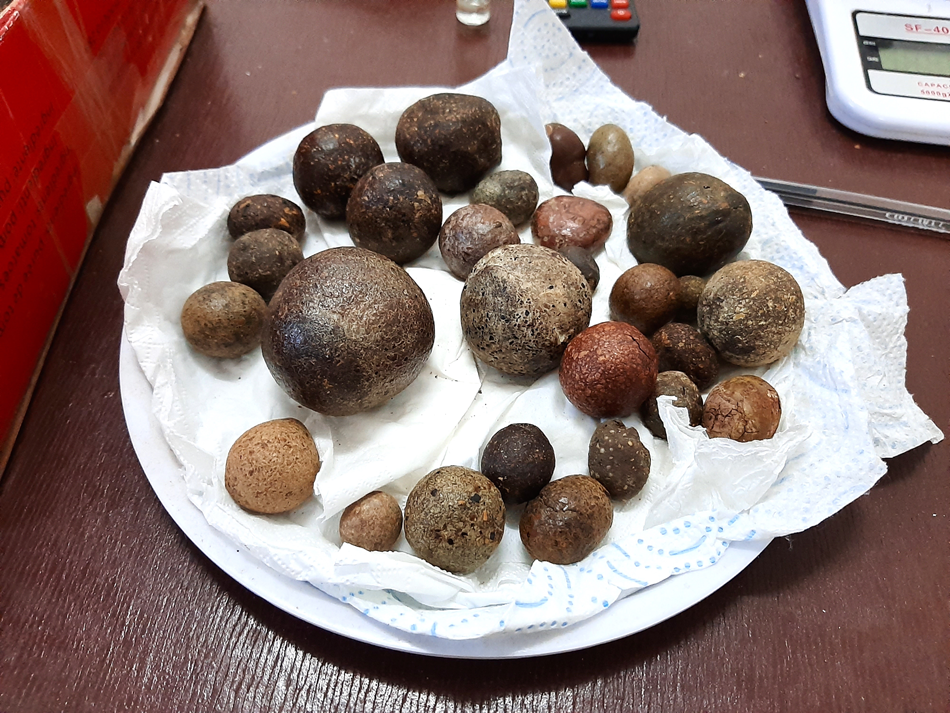Old world porcupines (family Hystricidae) are extensively hunted across the tropics for subsistence. Porcupine bezoars (undigested organic and inorganic material occurring in the stomachs of some individuals) are used in purported medicines in South-east Asia (Heinrich et al., 2020, Global Ecology and Conservation, 24, e01204). The African brush-tailed porcupine Atherurus africanus, a common bushmeat species in Central Africa, has not previously been identified as a source of bezoars for the Asian market. In September 2020, we discovered signs of the trade in the south-west Republic of the Congo through interviewing local bushmeat sellers along the RN1 national road near the town of Dolisie. The sellers confirmed the occasional presence of bezoars in porcupines and showed us one, offering it for USD 36 per g. They provided information about the supposedly Chinese purchasers of their stocks, who reside in Dolisie, where we later approached a group comprising one Congolese man and two male logging company managers of Malaysian citizenship (from Sarawak). They showed us bezoars of various sizes, the largest being c. 200 g. Bezoars are purchased by the men or their Congolese representatives in multiple villages, hunting areas and logging camps, and later hidden in their airline luggage and transported to Malaysia, reselling to other traders or directly to medicine sellers. They allegedly sell for up to MYR 300 (c. USD 73) per g to traders in Malaysia, and the final price for customers can reach MYR 800 (USD 193) per g, with the white and green bezoars reportedly the most valued.

Porcupine bezoars photographed at the home of Malaysian traders in Dolisie, Republic of the Congo. Photo: Arthur F. Sniegon.
Our investigations up to June 2021, including searches and interviews with traders in the main market in Brazzaville, resulted in no further information about bezoars. However, in the coastal city of Pointe-Noire, we found a Congolese man offering bezoars in the market and via WhatsApp for USD 10 per g. In remote areas of northern Congo, in the Sangha region, we found that people were mostly unaware of the existence or value of bezoars. However, a few people confirmed that traders from Brazzaville occasionally visit villages, paying USD 9 for small and USD 18 for large bezoars. The porcupine is not categorized as a threatened species and has the lowest level of legal protection in the Congo. However, there is a lack of data concerning the wild population and the sustainability of porcupine hunting practices. The trade in bezoars does not appear to have been noticed by local authorities, and is not considered illegal. If not monitored and regulated, we fear this increasing trade could become a stimulus for hunting and potential overexploitation of the African brush-tailed porcupine.




